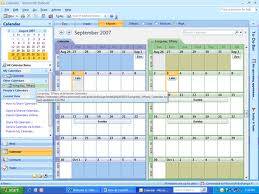Email etiquette - pt 1
A briefing on how best to use email, and how NOT to use it too
Courtesy of the www.netmanners.com website we reproduce some very wise advice about the use of email, wrtitten by Judith Kallos
Email Etiquette: - Get to Know the Basics! Part 1
October 5, 2008 By Judith Kallos
"There are four ways, and only four ways, in which we have contact with the world. We are evaluated and classified by these four contacts: what we do, how we look, what we say, and how we say it." - Dale Carnegie (1888-1955) American Educator
Below are the online basics you need to minimally become familiar with in order to be taken seriously in your online communications.
1. Do not type in all caps. Typing in all caps is considered yelling, screaming or at the very least adding emphasis to the word you type. Various studies on the topic reflect that it is more difficult and takes longer to read text that is typed in all caps. And for those who question 'What studies?' here is one example for your reading pleasure:
http://www.psych.utoronto.ca/~muter/pmuter1.htm
Searching for words is faster with uppercase characters, but reading of continuous text is slower (Vartabedian, 1971), perhaps because interline masking is greater with uppercase (Nes, 1986). In addition, lowercase enhances reading efficiency because word shape is helpful in word recognition (Rudnicky & Kolers, 1984).
One is free, at their convenience, to review the entire document above which goes into detail about how eyes react to what they have to read based on how the content is presented.
NOTE: It should go without saying, however, since I was chastised for not saying so, this rule certainly doesn't apply to the vision impaired or to those who are disabled or handicapped and cannot use the shift key. However, since typing in all caps is considered yelling online, it would behoove those who do so because of these reasons to take the time to include a brief note why they are typing in caps so that their emails and intent are not misinterpreted.
2. Do not leave the Subject: field blank. Always fill in the Subject: field with a brief and concise description of the content of your email. This is very important in helping those you communicate with organize and manage their email. Important: avoid using all caps or all lower case, terms such as Hi, Help or Please Respond, or the recipient's name in the Subject: field as you may be misidentified as a spammer and your email deleted.
3. Refrain from formatting your email with colored text and background colors or images in your day to day communications. Your color and formatting choices can make your emails impossible to read. In addition, formatting could make your emails difficult to reply to without having to go through a procedure to convert your email to plain text first.
Many times when folks hit Reply they have to deal with your formatting carrying over to their reply which makes communicating with you unnecessarily difficult. Why would you expect folks to have to go through having to convert your email just to read and respond to you?
The answer: They probably will not! Using large background graphics that take forever to download, especially if you have a phone connection (which is more common than most think once you get outside of metro areas) is plain old naive. Just send your email in plain text!
4. On those rare occasions where it is necessary to send a group of people the very same email, as a courtesy to those you are sending to, please list all of the recipients email addresses in the BCc: field. (Blind Carbon Copy, from the old days when typewriters used carbon paper to create identical copies of a document when it was being typed.)
When an email address is designated in the Blind Carbon Copy field, the recipient will get a copy of the email while their email address remains invisible and protected from the view of the other recipients of the email, some of whom they may or may not know.
This is especially relevant to us when using the Template as ALL Emails are sent 'blind' with the consequence that unless you tell the recipients who you have sent your email to, they won't know. This might appear inconvenient but hopefully once you have read through these notes you will understand why - we take security seriously!
5. Never expose your contacts' addresses to strangers! If you are not sure how to BCC in your email program, here are site resources that may help you learn the features of your software programs.
Long lists of email addresses at the beginning of any email is an immediate sign that the sender is either a novice/Newbie, or doesn't care to respect others' privacy. None of which, as I am sure you'll agree, are complimentary perceptions! Email addresses are like phone numbers. Only the owner of the email address or phone number is the one to authorize who they want to have it and make it public to. By listing handfuls of email addresses in the email headers for all to see is inconsiderate of each recipient's right to privacy.
In addition, many of these emails are actually hoaxes or downright bogus. Before you forward an email that appears good intentioned with an incredible story that instructs you to 'read and share' with everyone you know, first check Snopes.com to see if the story is even legit in the first place and not a hoax. Not doing so can have you eating crow when everyone you email is informed you just forwarded a hoax and didn't know any better.
And, don't get mad at someone if they point out to you that you were uninformed by perpetuating a hoax! If you don't know for a fact that the email you are forwarding is accurate and specifically apropos to the person you are forwarding to and you know they will want to receive it all you have to do is ask first.
6. Never give out phone numbers or personal information without confirming you are communicating with a reputable party. Never give out personal contact information of others without their specific permission to do so.
7. Make a reasonable effort to search a Website for the information you are looking for "Frequently Asked Questions" or "About Us" sections may give you the answers you seek before you waste the site owner's time by emailing for information that is readily available on their site. I get emailed daily for answers that are easily found in my 10 Courtesies or in the Internet 101 section if someone were to make minimal effort.
These onliners simply didn't want to take the time to read them so they expected me to take the time to repeat what is on my site. Talk about giving the perception of lazy and not respecting other's time! If a Website owner takes the time to provide information, read it. No one person's time is more important and common courtesy includes respecting this fact.If you do not find what you are looking for, search for the appropriate contact area for your question. Do not just click on the first email link you come across and blurt out your question(s).
If you do, don't be surprised if your email goes unanswered when the information is easily found on the site.It is important to understand the focus of each Web site as well. Each site cannot be everything to everyone or be what you perceive it should be. Be sure to review the information provided to double check that what you seek would even be covered by the site you are visiting.
8. Do not use Return Receipt Request (RR) for each and every email you send because you like 'knowing' when someone opens your email. Not only is this annoying to the recipient, this feature is intrusive! How would you like it if every time you heard a voice mail, answering machine message, opened a postal letter from a friend it was immediately reported back to them that you had heard/opened their communications?
The recipient should have the privacy to determine when/if they want to open, read and reply period. RRs should be reserved for those instances where it is critical to each side knowing the email was opened. Such instances would include legal and important business issues. Keep in mind opened doesn't mean read and that the recipient can decline an RR request so you will not be notified of their actions.
There's a second page of useful tips to follow
Related pages...

How to update your own on-line calendar from this website
more This page contains instructions how to download, and even keep updated, the calendar of events and regular meetings of Nene Valley.

Website guidance
more From here you may download a PDF on how to log onto, and how to use, this website.
RIBI website - access for Rotarians
more How to and why you should access the RIBI website
Email etiquette - pt 2
more Email do's and dont's
back to page above this...

Mainly for Members
back This page, which is available to anyone who browses the site, gives access to handy information in the public domain